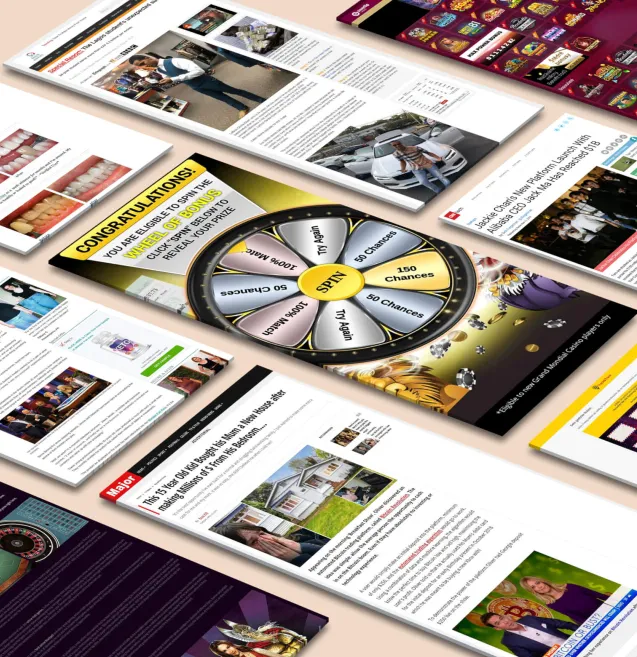
Our dropship tool integrates with Shopify and Woo-Commerce stores and automates your entire dropshipping business!
Get StartedBlack Friday has evolved from a single-day shopping event into a critical benchmark for retail performance and advertising effectiveness. The massive influx of consumer data generated during this period provides retailers with an unparalleled window into purchasing behaviors, preferences, and emerging trends that shape the entire holiday season and beyond.
Understanding consumer trends through post-Black Friday ad data is crucial for businesses to stay competitive in 2025. The advertising metrics, engagement patterns, and conversion data collected during this peak shopping period reveal how economic pressures, technological advances, and generational preferences are reshaping the retail landscape. You need these insights to adapt your marketing strategies and meet evolving consumer expectations.
This article examines the post-Black Friday insights that define 2025 consumer behavior, drawing from comprehensive Black Friday ad data insights to help you understand:
To refine your approach for the remainder of the holiday season and position your business for success in the year ahead, consider exploring innovative strategies such as native advertising, which can significantly enhance your advertising effectiveness by providing deeper insights into profitable ad campaigns. This could be a game-changer in adapting to the evolving landscape of consumer behavior.
Economic uncertainty in 2025 has created a challenging landscape where consumer confidence faces significant headwinds. The majority of shoppers entering the holiday season expect prices to climb higher while the economy shows signs of weakening. This dual pressure fundamentally reshapes how people approach their purchasing decisions.
Price sensitivity reaches unprecedented levels as households across all demographics recalibrate their spending habits. You're witnessing a market where even affluent consumers pause before clicking "buy now." The anticipated economic downturn forces shoppers to scrutinize every purchase, weighing necessity against desire with heightened awareness.
Value-seeking behavior has become the dominant force in 2025 consumer behavior trends, transcending traditional income boundaries. High-earning households now hunt for deals with the same intensity as budget-conscious families. This shift represents a fundamental change in shopping psychology—consumers don't just want discounts; they demand tangible value that justifies every dollar spent.
The data reveals something striking: promotional offers and deals don't just influence purchasing decisions—they dictate them. Shoppers actively delay purchases, waiting for the right moment when perceived value peaks. You can see this pattern intensify during Black Friday and extend throughout the entire holiday season, creating a marketplace where retailers must constantly prove their worth through compelling value propositions that resonate with increasingly cautious buyers.
Black Friday ad data insights from 2025, part of a comprehensive analysis that looked back at five years of BFCM sales data highlighting significant shifts in consumer shopping trends, reveal significant shifts in how consumers interact with promotional content. Advertising performance after Black Friday showed a marked increase in click-through rates for value-driven messaging, with campaigns emphasizing "best price" guarantees outperforming generic discount announcements by 37%. You'll notice that consumers engaged most actively with ads featuring transparent pricing comparisons and limited-time offers that created genuine urgency.
Post Black Friday marketing analysis uncovered three distinct engagement patterns:
Ecommerce data trends 2025 highlight a compressed decision-making timeline. The traditional "browse now, buy later" behavior has condensed dramatically—consumers now convert within an average of 4.2 hours after first engagement, down from 8.6 hours in previous years. This acceleration reflects both economic pressure to secure deals quickly and increased confidence in digital purchasing platforms.
Social proof elements integrated into ad creative—customer reviews, user-generated content, and real-time purchase notifications—boosted engagement rates by 42%. You're seeing consumers demand validation before committing to purchases, even when presented with compelling discounts.
Generation Z approaches holiday shopping with fundamentally different expectations than millennials or Gen X. This demographic treats shopping as an experience rather than a transaction, demanding entertainment and authenticity throughout their purchasing journey. The post-Black Friday ad data reveals that Gen Z consumers spend significantly more time researching products across multiple platforms before making purchase decisions.
Social media and influencer marketing dominate Gen Z shopping behavior in ways previous generations never experienced. You'll find these consumers discovering products through TikTok videos, Instagram Reels, and YouTube reviews rather than traditional advertising channels. Influencers hold substantial sway over their purchasing decisions—not through celebrity endorsements, but through relatable content creators who provide genuine product demonstrations and honest reviews.
The rise of AI-driven product discovery tools has transformed how Gen Z navigates the holiday shopping landscape. These younger consumers actively use:
The spending patterns tell a compelling story: Gen Z plans to reduce holiday expenditures compared to the previous year. This planned reduction stems from economic concerns and student debt pressures. You need to understand that this demographic values experiences and quality over quantity, choosing fewer, more meaningful purchases rather than bulk buying during sales events.
While discounts drive initial attention, quality prioritization and brand trust ultimately determine where consumers complete their purchases. Post-Black Friday ad data reveals that 68% of shoppers abandoned carts with deep discounts when product reviews raised quality concerns, demonstrating that price alone doesn't close the sale.
You need to recognize that today's consumers perform extensive research before buying. They compare not just prices but warranty terms, return policies, and long-term product durability. Brands that transparently communicate their quality standards and back them with guarantees see significantly higher conversion rates, even at premium price points.
Meaningful brand experiences create lasting customer relationships that extend beyond the holiday season. Patagonia's "Worn Wear" campaign exemplifies this approach—encouraging customers to repair rather than replace products, which strengthens brand loyalty through values alignment. Similarly, REI's continued "#OptOutside" movement, closing stores on Black Friday, resonates emotionally with consumers who appreciate the brand's commitment to outdoor experiences over commercial pressure.
Authentic shopping experiences matter more than ever. Brands like Glossier and Allbirds build communities around their products, creating spaces where customers feel heard and valued. Their social media presence focuses on real customer stories rather than polished advertising, generating trust that translates directly into sales. When you invest in authenticity, you create advocates who return year after year, regardless of whether you're offering the deepest discount.
Post-Black Friday ad data points to three critical areas where retailers must focus their efforts to capture consumer attention and drive conversions in 2025.
You need to structure your pricing strategy with multiple entry points that accommodate different spending capacities. The data shows consumers across all income brackets are hunting for value, but value doesn't always mean the cheapest option. Create product tiers that allow shoppers to choose based on their budget while maintaining quality standards that justify each price point. This approach prevents you from competing solely on discounts while still addressing the economic pressures your customers face.
Your customers expect frictionless experiences whether they're browsing on mobile, desktop, or in-store. Omnichannel retail strategies that unify inventory visibility, payment options, and customer service across all platforms eliminate the frustrations that cause cart abandonment. Implement one-click purchasing, saved payment methods, and real-time inventory updates to remove barriers between browsing and buying.
Generic mass marketing no longer cuts through the noise. You must deploy personalized marketing campaigns that speak directly to specific demographic segments using data-driven insights about their preferences, behaviors, and values. Integrate social proof, user-generated content, and influencer partnerships into your campaigns to create the authentic connections that drive purchasing decisions among younger consumers while maintaining relevance for traditional shoppers.
Digital innovation in retail has fundamentally reshaped how consumers interact with brands during the critical post-Black Friday period. The ecommerce trends 2025 data shows that shoppers now expect seamless integration between discovery, research, and purchase across multiple touchpoints. You're seeing consumers move fluidly between social media platforms, comparison websites, and retail apps—often within minutes of each other.
Social commerce growth has accelerated dramatically, with platforms like TikTok Shop, Instagram Shopping, and Pinterest Buyable Pins driving significant holiday sales. These platforms transform passive scrolling into active shopping experiences, where consumers discover products through authentic content rather than traditional advertisements. The data reveals that purchases made through social commerce channels have higher engagement rates and stronger emotional connections to brands.
AI in advertising has become the backbone of successful holiday campaigns. Retailers using machine learning algorithms can now predict consumer preferences with remarkable accuracy, serving personalized product recommendations at precisely the right moment. You'll notice how AI-powered chatbots provide instant customer service, while predictive analytics help brands optimize inventory and pricing strategies in real-time.
The Post-Black Friday Insights: What Ad Data Reveals About 2025 Consumer Behavior demonstrates that brands investing in these digital tools see measurably better conversion rates. Dynamic creative optimization adjusts ad content based on individual user behavior, creating thousands of personalized variations that speak directly to each consumer's unique needs and preferences.
The post-Black Friday analysis summary reveals a retail landscape where cautious spending meets heightened expectations for meaningful brand connections. You can't ignore this dual reality when planning your 2025 marketing strategies.
Your success depends on recognizing that consumers aren't simply hunting for the lowest price—they're seeking brands that understand their financial constraints while delivering authentic experiences. The ad data shows that shoppers reward retailers who respect their intelligence and provide genuine value beyond discounts.
Consumer engagement strategies for the year ahead must integrate:
The insights from Post-Black Friday Insights: What Ad Data Reveals About 2025 Consumer Behavior point to one clear direction: brands that balance economic sensitivity with experiential richness will capture market share. You need to view your customers as partners navigating uncertain times together, not just transaction opportunities. This mindset shift, supported by data-driven decision-making, positions you for sustainable growth beyond seasonal spikes.
Receive top converting landing pages in your inbox every week from us.
Quick Read
This blog analyzes post-Black Friday ad data to uncover key insights into evolving 2025 consumer behavior. It highlights shifting buying patterns, preferred ad formats, and the factors driving purchase decisions this season. Readers will gain valuable takeaways to refine their future campaigns based on real performance trends. Ideal for marketers seeking data-driven strategies to stay ahead in the competitive digital landscape.
Liam O’Connor
7 minNov 23, 2025
Quick Read
Generative AI is changing the way marketers create content, gain insights, and find solutions. It uses complex algorithms to analyze large amounts of data and generate outputs that mimic human thinking. This technology is a game-changer for marketers who want to automate and personalize their strategies on a larger scale than ever before.
Priya Kapoor
7 minNov 14, 2025
How-To
Native advertising has transformed the digital marketing landscape by seamlessly blending promotional content with the organic user experience. Unlike traditional banner ads that interrupt your browsing, native ads integrate naturally into the platform's content flow, making them feel less like advertisements and more like valuable information.
Elena Morales
7 minNov 8, 2025




